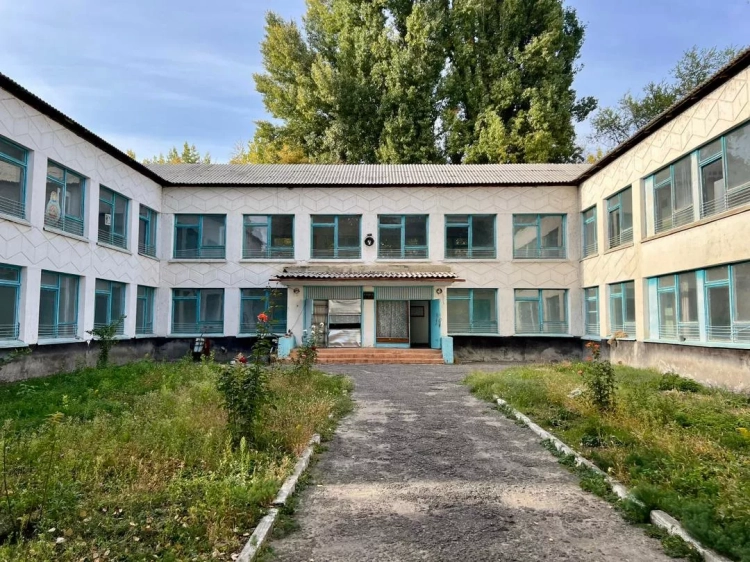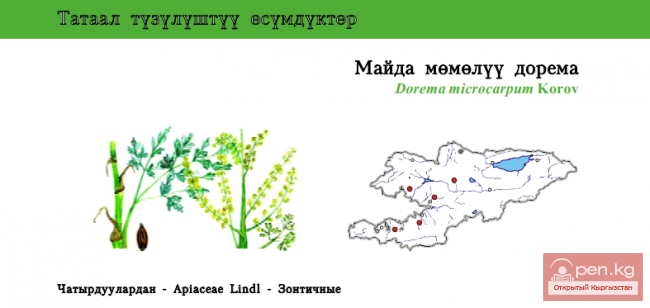Koy-Kap - Glacier in the Khan-Tengri Massif
The Kaindy Ridge, which separates the valleys of the Kaindy and Koy-Kap glaciers, adjoins the Inylchek-Tau ridge in the area of the Red Army Peak in the eastern part. The northern slopes of the ridge have significant glaciation. In the wide lateral valleys of the ridge, there are relatively large (3-7 km long) valley glaciers. The southern slope of the ridge has less glaciation and a steep gradient; it is cut by narrow canyon-like gorges through which cascading waterfalls flow from the side tributaries of Koy-Kap. It is important to note the sharp difference in elevation between the Koy-Kap and Kaindy valleys; at the level of the Koy-Kap glacier's tongue, the relative elevation difference between the ridge of the Kaindy range and the Koy-Kap glacier is 1600 m, while between the ridge and the Kaindy glacier it is 800 m.
The length of the glacier is 11.9 km; the area is 27.8 km².
The Koy-Kap Glacier (Sheep's Bag) is a complex valley glacier with numerous side tributaries.
The surface of the glacier from its turn to the west is covered with well-developed moraines. The flow of the glacier from the cirque to the turn to the west is quite calm; the glacier in this section is open (except for the area in the upper cirque), and there is no undulation. Further on, the steepness of the fall sharply increases, and the glacier descends across the entire width of the valley in a broken, powerful icefall down to the right side tributary. The icefall bypasses through a pocket on the right bank of the glacier. From the pocket, it is easier to access the right (first) side tributary. The right lateral glacier, Alpinist, flows into the main glacier with a broad stream of open ice. To the left of this stream is a convenient moraine that allows access to the main glacier. Beyond this point, the Koy-Kap glacier is completely covered by moraine; there is significant undulation, and the relative height differences between individual glacial peaks reach 40-50 m.

Historically, the "Sheep's Bag" was used by the Kaindy Kyrgyz to corral sheep into it during low water in late autumn – early spring-winter. The presence of a warm microclimate in the deeply incised upper reaches, grass even in winter, and the inability of sheep to escape into full water in summer made these places ideal for livestock farming.
Koy-Kap, according to Kyrgyz belief — the mountains surrounding the land on all sides — is the edge of the earth, the end of the world. While movement in the more northern parts of the mountain knot presents considerable difficulties, south of Koy-Kap it becomes almost impossible. This is a true "edge of the world," beyond which it seemed one could only penetrate by moving into the "other world." Apparently, this is why the local population historically gave this glacier such a name.
The area of the Koy-Kap glacier is relatively rarely visited by tourists. In 1900, attempts to penetrate the Koy-Kap glacier were made by the Italian expedition of Prince Borghese. After crossing the Inylchek-Tau and Kaindy ridges, they were unable to pass through the canyon of the Koy-Kap River.
In 1902-03 and in 1907-08, Merzbacher was in the lower reaches of the Koy-Kap River. For the first time, the upper reaches of the Koy-Kap and Kaindy glaciers were accessed by participants of the Ukrainian expedition in 1932-1933, as well as a group of geologists led by D. I. Yakovlev in 1935.
In 1959, participants of the "Locomotive" society expedition (Moscow) led by I. V. Biryukov crossed the Koy-Kap Pass from the Koy-Kap glacier to the Komsomolets glacier and also explored the "Powerful" pass (in the Kaindy ridge).
In summer, the only possible route to the upper reaches of Koy-Kap lay through the Janadzhir Valley via the Maybash Pass. Problems with this route began in the 1960s after the Soviet-Chinese conflict. After the border between Kyrgyzstan and China was moved in 2000 to the Maybash ridge, this route became impossible. However, it was traversed in the fall during low water in 1998 by Moscow paddlers led by S. Kryukov.















































